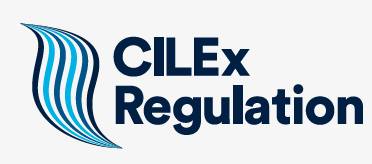CILEx Regulation
Diversity matters: Why is diversity important?
A diverse workforce is a strong workforce. Our latest equality and diversity survey provided key information that will help us to identify trends to inform our policy development and decision-making.
 A strong legal workforce is formed when talented people, regardless of their diversity characteristics, remain working in the legal sector and are supported, retained and promoted within it. The legal profession needs to be made up of capable lawyers, who reflect the communities they serve and bring diverse opinions and genuine understanding of their clients’ circumstances.
A strong legal workforce is formed when talented people, regardless of their diversity characteristics, remain working in the legal sector and are supported, retained and promoted within it. The legal profession needs to be made up of capable lawyers, who reflect the communities they serve and bring diverse opinions and genuine understanding of their clients’ circumstances.
Why we collect diversity data
CILEx qualifications offer a flexible and inclusive route into a legal career. While this opens the door to the legal workplace for a diverse range of people, there can be issues for different groups, such as achieving progression. Using current and full diversity data about the individuals and firms we regulate, helps us understand the diverse make-up of our regulated community, identify issues and, where possible, work to address these and observe changes over time.
Diversity survey: our findings
In 2019, we carried out the second collection of diversity data from our whole regulated community and received 8,346 responses. We gathered information across a wide range of indicators. We provided a free-text box to collect qualitative information for the first time, and more than 700 people took this as an opportunity to provide detailed feedback about their experiences and observations around inclusion, equality and diversity within their professional lives. This reflected the importance of diversity issues to our regulated community and provided deeper insight into the challenges faced.
When we analysed the data, we were keen to understand more about our current key areas of focus - social mobility and female parity of opportunity. We also looked again at Black, Asian and Minority Ethnic (BAME) responses and individuals identifying with a disability, following on from our 2017 diversity report.
Key findings include:
- The 2019 survey results reaffirmed the findings from the 2017 survey with no significant changes.
- We achieved a higher response rate of 40% up from 26% in 2017 – (Thank you to everyone who provided their information).
- The 2019 survey reaffirmed inequality for females, particularly data relating to childcare and comments about inflexible working.
- There is an indication that individuals from more advantaged socio-economic backgrounds do better by joining CILEx in higher grades and achieving greater career progression.
- For further information see, the ‘Diversity Report 2019’ and the report’s summary infographic. See also our 2017 diversity report
